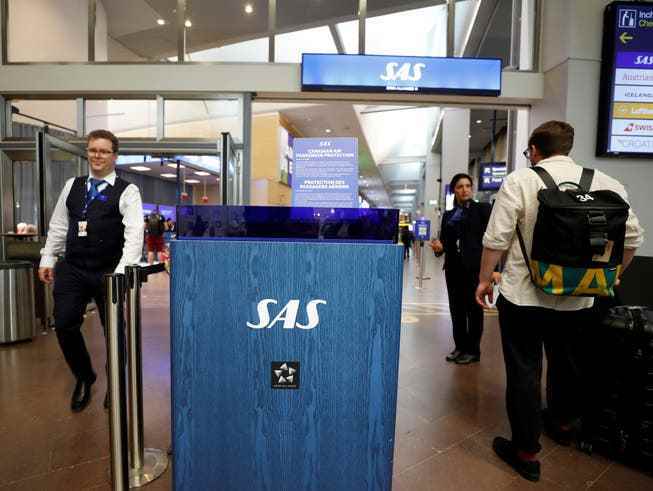Turbine manufacturer Siemens Energy reports quarterly loss
Siemens Energy was most recently in the limelight as a manufacturer of turbines for the Nord Stream 1 gas pipeline.
(Bloomberg) Siemens Energy posted an even bigger loss in the three months to June than analysts had feared. The reasons include the problems at the wind turbine subsidiary and the restructuring of the business in Russia.
The company on Monday reported an adjusted loss of 429 million euros before interest, taxes, depreciation and amortization, including a 200 million euro charge from operations in Russia. Analysts had expected a loss of 245 million euros. The company now expects the net loss in fiscal 2022 to be higher than last year.
Persistent problems at the subsidiary Siemens Gamesa Renewable Energy have overshadowed the otherwise good profits in the gas and electricity division. Gamesa again lowered its full-year guidance last week, citing rising commodity costs and ongoing problems with onshore turbines. In May, Siemens Energy submitted an offer to take over Siemens Gamesa in full. The EUR 4.3 billion transaction is expected to close in the second half of this year.
In Russia, Siemens Energy started winding up the remaining business in the last quarter. There should be an end to it by the end of the financial year, and there should no longer be any “significant financial effects”. Despite the problems, incoming orders rose by 60 percent to 9.8 billion euros. Both the gas and power division and the wind turbine subsidiary posted strong entries.
As a manufacturer of turbines for the Nord Stream 1 gas pipeline, the company was involuntarily in the limelight after Moscow declared that it did not want to accept a freshly serviced turbine due to a lack of technical documentation – with the corresponding consequences for gas supplies.
After several strikes: SAS pilots vote for collective agreement

In recent weeks, Scandinavian Airlines (SAS) has had to cancel thousands of flights due to strikes.
(dpa)
Hundreds of Danish, Norwegian and Swedish SAS airline pilots have spoken out in favor of a negotiated new collective agreement. In ballots in their respective countries, they agreed to the agreement with the airline, as several unions involved announced on Saturday (6 August). The Scandinavian airline is thus avoiding another pilots’ strike of the kind it experienced for over two weeks in the course of a wage dispute in July. The SAS had cost millions, more than 3700 flights were canceled.
In Denmark, 89 percent of the pilots entitled to vote participated, 93 percent of whom voted for the collective agreement. The unions initially left open the size of the majority in Norway and Sweden. The full result should be available next week.
On July 19, after tough negotiations, the unions and the SAS agreed on a new collective agreement that was set to run for five and a half years. The pilots therefore receive five percent less salary, they should also fly more in the high season in summer and less in winter. Overall, the pilots are about a quarter cheaper for the financially troubled airline. At the same time, the agreement means that hundreds of pilots who were made redundant in the corona pandemic will be reinstated.
Employment in the USA is rising much faster than expected
(dpa) The US economy created significantly more jobs than expected in July. Outside of agriculture, 528,000 jobs were added, the Department of Labor announced on Friday in Washington. On average, analysts had only expected 250,000 new jobs.
In July, unemployment fell back to the level it was before the corona pandemic. The unemployment rate fell from 3.6 to 3.5 percent. According to the ministry, about 5.7 million people were unemployed. Both values correspond to the pre-corona level of February 2020. Meanwhile, many companies are complaining about the shortage of workers.
Swiss hotels are catching up significantly: 47 percent more guests

The Swiss hotel industry is once again attracting significantly more guests: the terrace in front of the Hotel Rigi Kulm.
tsf. Swiss tourism is rapidly catching up after the slump in the Corona crisis. In the first half of 2022, hotels were able to book over 47 percent more overnight stays. A total of 16.9 million overnight stays were spent in the hotels, as reported by the Federal Statistical Office (BfS) on Friday. With 10 million overnight stays, domestic demand increased by 8 percent. Demand from foreign visitors grew to 6.9 million overnight stays, an increase of 212.8 percent.
However, the level of the pre-Corona period has not yet been reached. Compared to the first six months of 2019, the numbers are around 10 percent behind.
Differentiated according to the origin of the guests, demand from all continents rose sharply compared to the first half of 2021. With 2.8 million additional overnight stays (+142.6 percent), 70.2 percent of the demand was attributable to European guests. Visitors from Asia (+727,000 / +918.3 percent) and America (+1.0 million / +1,005.1 percent) contributed a total of 27.6 percent to foreign demand.
The largest relative increases were recorded in Geneva (+175.2 percent), in the Zurich region (+155.8 percent) and in the Basel region (+96.8 percent). Ticino recorded a decline (–13.3 percent) compared to the first half of 2021. Compared to 2019, demand was only higher in four tourism regions, namely in the regions of Ticino (+15.2 percent), Graubünden (+5.8 percent), Jura & Drei-Seen-Land (+2.9 percent) and Eastern Switzerland ( +2.4 percent).
Orell Füssli is growing slightly, but earning well

Orell Füssli has significantly improved its profits in the security printing area.
tsf. The Orell Füssli industrial and retail group grew slightly in the first half of the year, but earned significantly more. The turnover of the traditional Swiss company rose from 97.3 to 97.6 million francs compared to the same period last year, as the company announced on Friday. In view of the tense market environment, which is characterized by rising raw material prices, shortages of key goods and fears of recession, the slight growth is in line with expectations. In contrast, operating earnings before interest and taxes (EBIT) increased by 16 percent to CHF 7.4 million. Net profit rose by almost 18 percent to 6.7 million Swiss francs.
In security printing, sales fell by 3.1 percent to 38 million francs. The operating result (EBIT) climbed from CHF 4.2 to 7.8 million. Orell Füssli attributes this to a good product mix.
According to the company, sales in the Industrial Systems division (Zeiser) fell from 13.2 to 11 million francs due to corona-related staff shortages and the move to a new facility. The operating result fell accordingly from 3.3 to 1.9 million Swiss francs.
On the other hand, the group has grown in its largest area, the book trade. Here, sales increased by 8.7 percent to CHF 45 million. Both the retail trade and the business customer sector, which supplies schools, companies, authorities and libraries with specialist literature, have increased. The operating profit rose in the book trade from 0.6 to 0.9 million Swiss francs.
For 2022 as a whole, the company expects a slight increase in sales and an EBIT margin at the previous year’s level.
Depreciation eats away at Allianz’s profits
(dpa) Write-downs on capital investments and other charges caused the insurer Allianz to suffer a decline in profits in the second quarter, despite an improvement in day-to-day business. The bottom line was a profit of 1.7 billion euros, 23 percent less than a year earlier, as the group announced on Friday. Operating profit, on the other hand, increased by 5 percent to 3.5 billion euros. CEO Oliver Bäte therefore sees Allianz on course to achieve an operating profit of between 12.4 and 14.4 billion euros this year as planned.
In the second quarter, Allianz increased its sales by 8 percent to 37.1 billion euros. While the operating profit of life and health insurance fell by around 13 percent, the group earned 21 percent more than a year earlier in property and casualty business, also thanks to lower catastrophe losses. In the fund business of the subsidiaries Pimco and Allianz Global Investors, however, operating profit fell by almost 7 percent. In the course of the market turbulence and rising market interest rates, investors withdrew 33.8 billion euros from the funds.
